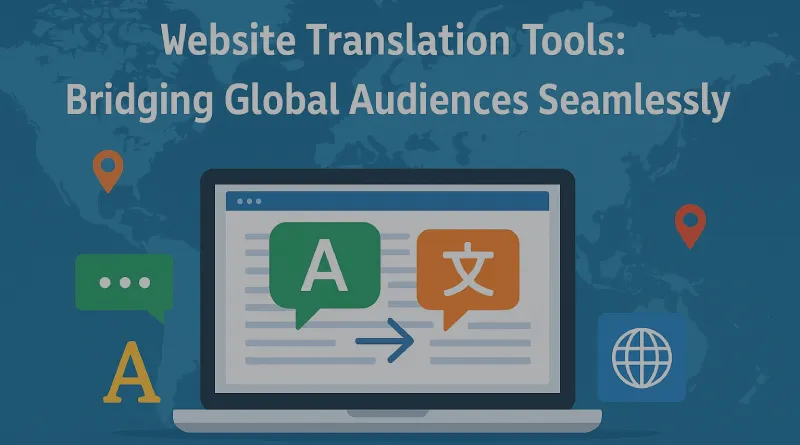Website Translation Tools: Bridging Global Audiences Seamlessly
In today’s digital-first world, businesses no longer cater only to local customers. A website has the potential to attract visitors from across the globe, but language often becomes a barrier. Website translation tools provide a solution by enabling businesses to deliver content in multiple languages quickly and efficiently, enhancing accessibility and improving user experience.
Why Website Translation Matters
When a visitor lands on a website, they are more likely to engage if the content is in their native language. Studies show that consumers are more inclined to make a purchase or inquire further when they fully understand the product or service. Offering multilingual content builds trust, broadens market reach, and gives businesses a competitive advantage in an increasingly global economy.
Types of Website Translation Tools
Website translation tools can be broadly categorized into machine translation tools and professional translation platforms.
1. Machine Translation Tools
These are powered by artificial intelligence and natural language processing. Tools like Google Translate, DeepL, and Microsoft Translator offer quick translations of web pages and text. They are cost-effective, easy to integrate, and suitable for businesses seeking immediate solutions. However, accuracy may vary depending on the complexity of language and context.
2. Professional Translation Platforms
Platforms such as Weglot, Smartling, or Transifex combine automation with professional human translation. They often come with features like content management, SEO optimization for multilingual sites, and real-time updates. While they may be more expensive, they provide higher-quality translations and better localization support.
Benefits of Using Website Translation Tools
- Global Reach : Businesses can engage audiences across continents without creating separate websites.
- Improved User Experience : Visitors feel valued when content is offered in their language.
- Faster Time-to-Market : Automation accelerates the process of publishing multilingual content.
- Consistency Across Channels : Many tools synchronize translations across websites, apps, and marketing campaigns.
Challenges to Keep in Mind
While translation tools are powerful, they are not without limitations. Machine translations may struggle with cultural nuances, idiomatic expressions, or industry-specific terminology. Over-reliance on automation could risk miscommunication. For mission-critical content—such as legal documents or medical information—professional translation and proofreading remain essential.
Final Thoughts
Website translation tools are no longer optional—they are a necessity for businesses aiming to scale globally. By breaking down language barriers, these tools create opportunities for deeper engagement, stronger brand loyalty, and higher conversions. Whether you choose a free machine translation plugin or invest in a professional translation platform, the key is to align the tool with your business goals, audience needs, and long-term growth strategy.
Disclaimer
The information presented in this blog is derived from publicly available sources for general use, including any cited references. While we strive to mention credible sources whenever possible, Digital Marketing Company in Mumbai does not guarantee the accuracy of the information provided in any way. This article is intended solely for general informational purposes. It should be understood that it does not constitute legal advice and does not aim to serve as such. If any individual(s) make decisions based on the information in this article without verifying the facts, we explicitly reject any liability that may arise as a result. We recommend that readers seek separate guidance regarding any specific information provided here.

